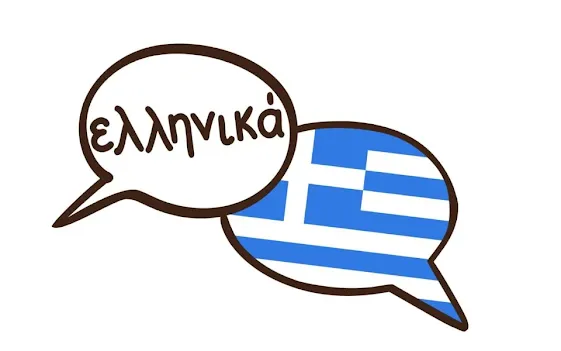Η έκθεση με
τίτλο «Μουσείο Εκμαγείων Α.Π.Θ. και Εργαστήριο Gilliéron: ένας αιώνας
δημιουργικής συνεργασίας» αποτελεί ένα πρωτότυπο εγχείρημα που προέκυψε από τη
συνεργασία του Μουσείου Εκμαγείων του Αριστοτελείου Πανεπιστημίου Θεσσαλονίκης
και του Αρχείου Gilliéron της Γαλλικής Σχολής Αθηνών.Στον πυρήνα της έκθεσης
βρίσκονται έργα που αγοράστηκαν τα πρώτα χρόνια λειτουργίας του Μουσείου
(1928–1930) από το εργαστήριο των Émile Gilliéron πατέρα και υιού στην Αθήνα,
κατόπιν ενεργειών του πρώτου καθηγητή Κλασικής Αρχαιολογίας στο Α.Π.Θ.,
Κωνσταντίνου Ρωμαίου.
Πρόκειται
για ζωγραφικά έργα που αντιγράφουν γνωστές τοιχογραφίες και γαλβανοπλαστικά
αντίγραφα μυκηναϊκών και μινωικών αντικειμένων, αποτελώντας μία από τις
ελάχιστες πλήρεις συλλογές παγκοσμίως. Την ίδια εποχή αγοράστηκαν και εκμαγεία
αρχαϊκής γλυπτικής (Κόρες, Κούροι, ανάγλυφα) από τα πρώτα του Εργαστηρίου
Γυψίνων του Εθνικού Αρχαιολογικού Μουσείου.Η έκθεση περιλαμβάνει αντίγραφα και
εκμαγεία έργων, καθώς και αδημοσίευτο αρχειακό υλικό, φωτογραφίες, σχέδια,
δημοσιεύματα και εργαστηριακό εξοπλισμό από τα πεδία της Προϊστορικής, Κλασικής
και Βυζαντινής Αρχαιολογίας, της Ιστορίας της Τέχνης, της Νεότερης Ιστορίας και
των Ψηφιακών Εφαρμογών.Τα εκθέματα καλύπτουν μια χρονολογική περίοδο από τη
Μυκηναϊκή και Μινωική εποχή έως τη Ρωμαϊκή και Βυζαντινή περίοδο, ενώ για τους
νεότερους χρόνους φθάνουν έως το πρώτο μισό του 20ού αιώνα.
Τα εγκαίνια
της έκθεσης, που εντάσσεται στον εορτασμό «100 χρόνια Α.Π.Θ.», θα γίουν την Πέμπτη 20 Νοεμβρίου 2025, ώρα
18:00, στο αμφιθέατρο του Μουσείου Εκμαγείων (νέο κτήριο Φιλοσοφικής Σχολής,
Αίθουσα Β).
Διάρκεια έκθεσης: έως 25 Ιουνίου 2026
Ώρες λειτουργίας: Δευτέρα–Παρασκευή 9:00–14:30, με ελεύθερη είσοδο
Πληροφορίες & ομαδικές ξεναγήσεις: 2310 997301
Υπεύθυνη επικοινωνίας:Καθηγ.Ελένη Μανακίδου,
hmanak@hist.auth.gr,6976689480
The exhibition
entitled: “Cast Museum A.U.Th and Gilléron Workshop: A Century of Creative
Collaboration” is an original project that resulted from the cooperation
between the Cast Museum at the Aristotle University of Thessaloniki and the
Gilléron Archive at the French School of Athens. At the heart of the exhibition
are many artefacts on display at the Cast Museum, purchased the years following
its opening (1928–1930) from the workshop of the Gilléron artists, father and
son, in Athens, through the efforts of Konstantinos Romaïos, the first
professor of Classical Archaeology at the University of Thessaloniki. The
collection consists of painted and galvanoplastic facsimile of well-known
frescoes and objects of Mycenaean and Minoan art, constituting one of the few
complete collections of this kind worldwide still preserved. In addition, many
casts of ancient sculptures (Korai, Kouroi, reliefs, etc.) were purchased at
the same time, among the first to be made at the Plaster Cast Workshop of the
National Archaeological Museum at Athens, where Gilléron fils was the artistic
Director.
The exhibition
presents copies and casts of ancient artworks, as well as unpublished archival
and visual material, as technical equipment (remains of the workshop,
publications, photographs, drawings, projections) from the fields of
Archaeology (Prehistoric, Classical, and Byzantine), Art History, Modern
History, and Digital Applications. The exhibits are displayed throughout the
Cast Museum and cover a chronological range from the Mycenaean and Minoan to the
Roman and Byzantine periods in antiquity, and the first half of the 20th
century in modern times.
The opening of the exhibition, which is part of the centenary celebrations for the “100 years of Aristotle University of Thessaloniki”, will take place on Thursday, November 20, 2025, at 6:00 p.m., in the amphitheater of the Cast Museum (new building of the Faculty of Philosophy, Aristotle University of Thessaloniki, Hall B).
The
exhibition will run until June 25, 2026, and will be open Monday–Friday, 9:00
a.m.–2:30 p.m., with free admission (for group tours, please call 2310 997301;
Halls A and B in the basement of the new building of the Faculty of
Philosophy).
Information: Prof. Eleni Manakidou, Director of the Cast Museum, hmanak@hist.auth.gr, 6976689480
































